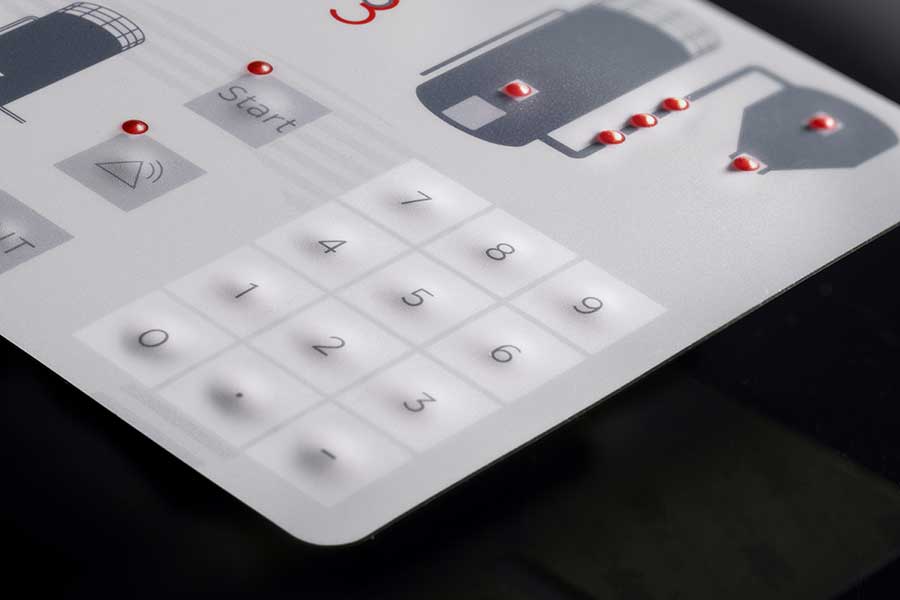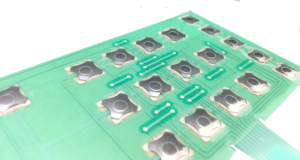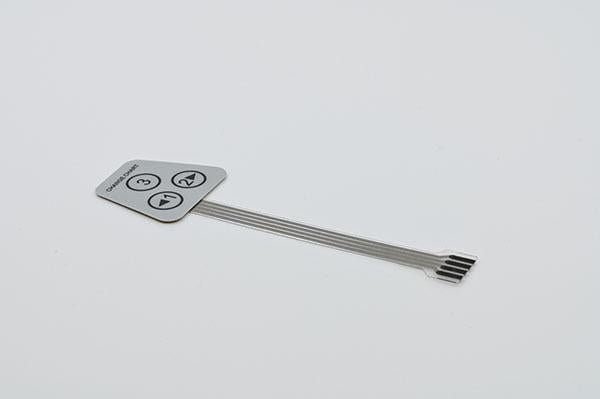Why Choosing the Right Membrane Switch Is Crucial for Your Item Style
Recognizing the Performance of Membrane Layer Switches Over for Customer User Interface Gadget
The performance of membrane layer switches over stands for a considerable improvement in individual interface layout, incorporating performance with aesthetic flexibility. As industries increasingly focus on customer experience, comprehending the nuances of membrane button technology ends up being vital.
What Are Membrane Switches?
Membrane layer buttons are cutting-edge user interface tools that facilitate user interaction with electronic devices. These versatile parts include several layers, including a graphic overlay, spacer, and a published circuit layer. The layout enables for a seamless integration right into different digital devices, enhancing both the aesthetic and useful aspects of interface.
Membrane layer switches are frequently used in a large range of applications, from family appliances to commercial machinery and medical gadgets. Their building generally features a thin profile, making them an excellent selection for small styles. The tactile comments provided by these switches can be engineered to meet details individual choices, guaranteeing efficient interaction in between the individual and the tool.
Longevity is another substantial benefit of membrane layer switches, as they are resistant to dirt, moisture, and chemicals, which boosts their life-span in demanding atmospheres. Additionally, these switches can be personalized in regards to shape, size, and graphic layout, enabling branding and user-specific features. On the whole, membrane layer switches stand for a practical service for enhancing individual experience in digital devices, integrating capability with visual charm in a reliable manner.
How Membrane Switches Over Job
Operating on a straightforward principle, membrane layer changes utilize a split building and construction to register customer input effectively. Each button contains several layers, including a printed circuit layer, a spacer layer, and a top graphic layer, which are developed to collaborate seamlessly. When a user presses the top layer, it presses the spacer layer, bringing the conductive elements of the circuit layer into contact with each other.
This call creates a closed circuit, indicating the tool to implement a specific feature. The layout enables various arrangements, consisting of responsive feedback, which can boost the user experience by giving a physical feeling upon activation. The products utilized in membrane switches frequently include flexible substratums, such as polyester or polycarbonate, which guarantee durability and strength against wear and tear.

Trick Benefits of Membrane Layer Buttons

An additional significant advantage is their density. Membrane layer buttons are thin and lightweight, which allows makers to save room in their gadgets without compromising functionality. This feature is especially beneficial in applications where weight and quantity are critical considerations.
Furthermore, membrane switches are immune to dust, wetness, and chemicals, enhancing their longevity. This resilience expands their lifespan and lowers the need for frequent replacements, causing expense savings gradually.
Moreover, the tactile responses offered by membrane buttons can be optimized to enhance individual interaction. They can include attributes such as increased switches or distinct this link clicks, boosting usability and individual experience.
Applications Throughout Industries
Customer interface tools using membrane layer switches prevail in a wide array of markets, showcasing their flexibility and functionality. Membrane Switch. In the clinical sector, membrane switches are essential to devices such as diagnostic tools and patient monitoring systems, where their resilience and simplicity of cleaning are critical for keeping hygiene requirements. Similarly, in the auto sector, these buttons are employed in control panel controls and site web infomercial systems, giving a sleek and modern user interface for users.
In addition, the consumer electronics sector benefits from membrane switches in appliances and portable gadgets, where portable layout and easy to use user interfaces enhance user experience. Industrial applications also leverage membrane layer switches over for control board in equipment and automation systems, emphasizing their effectiveness and resistance to extreme atmospheres.
In the aerospace and protection sectors, membrane switches are used in cockpit controls and tools, where integrity and efficiency under severe conditions are critical. Furthermore, the pc gaming market progressively integrates membrane layer buttons in controllers and gallery makers, contributing to an appealing customer experience. Overall, the adaptability of membrane changes allows their widespread use across countless industries, underscoring their value in contemporary customer interface style.
Future Patterns in Membrane Layer Change Modern Technology

Additionally, the usage of advanced products, such as polycarbonate and polyester films, is anticipated to climb, providing enhanced resilience and resistance to ecological stressors. These materials contribute to the total longevity of membrane layer switches, making them suitable for harsher commercial applications.
Furthermore, the incorporation of wise modern technology, consisting of IoT connection, will certainly make it possible for membrane switches to communicate with other tools and systems, helping with a much more interactive individual experience. This trend straightens with the growing need for wise devices throughout different markets, from health care to customer electronic devices.
Last but not least, modification choices are expected to expand, permitting suppliers to create bespoke services customized to details individual requirements and choices. These growths will place membrane buttons as essential parts in the development of individual interface technology.
Final Thought
In final thought, membrane changes stand for a critical development in customer interface technology, offering a reputable and versatile remedy for varied digital applications. As advancements in product science and touch picking up innovations proceed, the functionality and applicability of membrane layer switches are anticipated to expand, reinforcing their significance in modern-day digital devices.